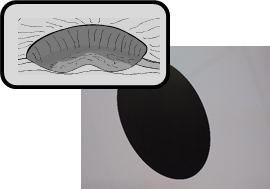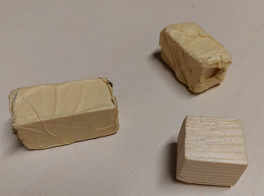During this Design-Based Learning (DBL) exercise you will be working in a team to design and build a system that is used to explore the planet Venus. You will develop robots equipped with sensors and actuators which drive over the surface of the planet. These robots need to cooperate with each other to complete several challenging tasks. In a final competition, the robots of all teams will compete against each other. The team which build the robots that are able to complete all tasks in the least amount of time will be the winner of this competition.
After a long journey through space, your robots will land on the planet Venus. The first location where the robots touchdown will be known as the base camp. From this location, the robots need to start their exploration of the planet. They need to navigate through a maze of steep hills and craters. It should be avoided at all cost that a robot falls into a craters as this will lead to the permanent loss of this robot for the expedition. While exploring the planet, the robots need to find several different rock samples that are hidden somewhere on the planet. Each of these samples needs to be found and brought back to the base camp. At the base camp, the samples need to be assembled and placed into the rock analysis laboratory that is available in the base camp.

Planet
The hills on the planet will be made of a hard material (e.g., cardboard boxes) that reflects ultrasound, but which absorbs most infra-red light. The hills will have a minimal height of 30 cm and it will be impossible to climb these hills with the robots. The cliffs will be marked on the floor surface with black tape. The outer edges of the planet will also be marked with black tape (i.e., the field explored by the robots is surrounded by cliffs at all ends). The rock samples will be squared boxes of approximatly 2x2x2 cm that reflect infra-red light (i.e., they will be covered with white tape). The rock analysis laboratory is a squared container with a width and length of 20 cm and a height of 2.5 cm. The rock samples need to be placed in the container from the top. A ramp (angle less then 30 degrees) will be available on one side to climb to the top of the laboratory.
Boundary |
Cliff |
Hill |
Rock samples |
Lab |
Note that these pictures are just illustrations. The actual objects might be different. They do however comply to the specification listed above.
